Enlightened minds would accord highest priority to education and development of the world’s largest child population to transform it into humankind’s biggest resource pool. But Budget 2009-10, presented to Parliament on July 6, indicates that the UPA-2 government and its resuscitated finance minister Pranab Mukherjee can’t think big. Dilip Thakore reports
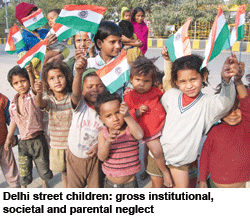 The first Union budget of the Congress-led United Progressive Alliance (UPA-2) government which was returned to power in New Delhi following the general election spread over five weeks in April-May, has been greeted with resounding silence by Indian academia. Hardly a surprising reaction since the two-hour budget speech of Union finance minister Pranab Mukherjee deliv- ered in heavily-accented Bengali-English to Parliament on July 6, devoted barely five minutes to describing provisions within the massive sum of Rs.1020,838 crore the UPA-2 government has budgeted to spend in the year ending March 31, 2010, for reviving India’s crumbling education system.
The first Union budget of the Congress-led United Progressive Alliance (UPA-2) government which was returned to power in New Delhi following the general election spread over five weeks in April-May, has been greeted with resounding silence by Indian academia. Hardly a surprising reaction since the two-hour budget speech of Union finance minister Pranab Mukherjee deliv- ered in heavily-accented Bengali-English to Parliament on July 6, devoted barely five minutes to describing provisions within the massive sum of Rs.1020,838 crore the UPA-2 government has budgeted to spend in the year ending March 31, 2010, for reviving India’s crumbling education system.
“I am sensitive to the great rising expectations of a young India. It reflects a population that is restless, yet engaged and ready to seize the opportunities it is presented with. There are new and powerful reasons for us to create, facilitate and sustain those oppor-tunities,” intoned Mukherjee. Yet his budget speech was silent on the extent to which the Central government’s outlay for education has been raised in Budget 2009-10. And there’s no word about the sectoral allocations between primary, secondary and higher education. Nor did it disclose the education spending priorities of the UPA-2 government. Is it infrastructure development, teacher recruitment and training or upgrading the quality of extant curriculums in the country’s schools and colleges to improve learning outcomes?
Although Mukherjee reminded the 543 new members of the Lok Sabha that in his interim budget speech of February 16, he had advised the new government to “create a competitive, progressive, and well-regulated education system of global standards that meets the aspiration(s) of all segments of society”, his July 6 budget speech had little to say about the provisions made to attain this lofty objective.
All that Mukherjee had to say about education in his opaque 120-minute budget speech was encapsulated in three paragraphs under ‘Female literacy’ (“to reduce by half the current level of female illiteracy in three years”); ‘Student loans to weaker sections’ to access higher education (“full interest subsidy during period of moratorium” for an estimated 500,000 students); ‘Welfare of minorities’ (“Grants-in aid to Maulana Azad Education Foundation almost doubled” — no amounts specified), and Rs.50 crore to Aligarh Muslim University to establish campuses in Murshidabad (West Bengal) and Malappuram (Kerala).
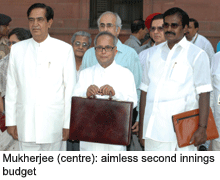 Another two paragraphs under the head ‘Education’ provides a “substantially increased” sum of Rs.900 crore to the government’s ‘Mission in Education through ICT’ scheme (which should be good news for the new crop of education companies such as Everonn, Educomp, NIIT, Manipal K-12 etc); Rs.495 crore for upgradation of polytechnics under the Central government’s Skill Develop-ment Mission; Rs.827 crore for establishing Central universities in hitherto unserved states; Rs.2,113 crore for the country’s 13 IITs and 20 NITs, and Rs.50 crore for the Punjab University at Chandigarh. “The overall Plan (i.e capital expenditure) budget for higher education is proposed to be increased by over Rs.2,000 crore over the interim BE (budget estimate),” Mukherjee informed Parliament and the nation.
Another two paragraphs under the head ‘Education’ provides a “substantially increased” sum of Rs.900 crore to the government’s ‘Mission in Education through ICT’ scheme (which should be good news for the new crop of education companies such as Everonn, Educomp, NIIT, Manipal K-12 etc); Rs.495 crore for upgradation of polytechnics under the Central government’s Skill Develop-ment Mission; Rs.827 crore for establishing Central universities in hitherto unserved states; Rs.2,113 crore for the country’s 13 IITs and 20 NITs, and Rs.50 crore for the Punjab University at Chandigarh. “The overall Plan (i.e capital expenditure) budget for higher education is proposed to be increased by over Rs.2,000 crore over the interim BE (budget estimate),” Mukherjee informed Parliament and the nation.
Ex facie these allocations for expansion and upgradation of the country’s long-neglected higher education sector seem impressive. Yet it is pertinent to note that in the budget address to Parliament — perhaps for the first time ever — the finance minister failed to disclose the Centre’s aggregate outlay for education. This means that the higher allocations for tertiary education may have been made at the expense of elementary education. Moreover, as in all the essentially opaque budgets designed to conceal extravagant government spending on itself and the establishment (which are greeted with unwarranted hype and hoopla), sectoral allocations in this budget as well, are completely unrelated to needs.
Indeed one of the great infirmities of the Union and state government budgets is that sectoral allocations are not weighed against needs which are not assessed at all. Thus while the finance minister has taken considerable pride over the provisions made for higher education in Budget 2009-10, given that a mere 9 percent of youth in the age group 18-24 are enroled in contemporary India’s much-too-few institutions of higher education (cf. 80 percent in the US and 20 percent in China), it’s self-evident that the monetised need of the tertiary education sector is ten times the amount allocated. Yet such is the grudging national mindset, that not a few economists and pundits have welcomed Mukherjee’s aimless second innings budget (he presented his first Union budget way back in 1984) as an education-friendly initiative.
Mukherjee’s failure to disclose the Union government’s aggregate outlay for Indian education in his 120-minute budget speech is particularly curious because examination of the Budget 2009-10 documents indicates that the Centre’s education outlay has risen by 29 percent in the current fiscal over the Rs.34,400 crore budgeted in 2008-09. By the grudging, incremental budgeting yardsticks of the Union finance ministry, this higher allocation is quite impressive, although unrelated to needs. In a budget dominated by populist give-aways under the heads of National Rural Employment Guarantee Scheme (Rs.39,100 crore); the six-scheme Bharat Nirman programme (“an important initiative for bridging the gap between rural and urban areas and improving the quality of life of people, particularly the poor in rural areas” — Rs.12,000 crore); the Rajiv Gandhi Grameen Vidyutikaran Yojana — a programme for rural electrification (Rs.7,000 crore); the Indira Awas Yojana, a rural housing develop-ment programme (Rs.8,800 crore), and defence (Rs.141,000 crore) and subsidies (Rs.112,000 crore), the finance minister was hard-pressed to provide more than Rs.44,528 crore as the Central government’s contribution for the education of the country’s 450 million children.
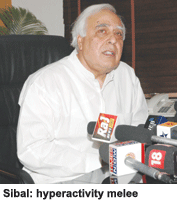 And with a provision of Rs.44,528 crore — a mere 0.79 percent of GDP — for the entire education sector, one wonders how Union HRD minister Kapil Sibal’s grand plans, announced on June 25 to inter alia enact the Right to Education Bill, promote model degree colleges in 100 districts, construct 100 women’s hostels, provide 5,000 colleges/ universities with broadband connectivity, establish 100 new polytechnics, ten new NITs and fund 82,000 scholarships in universities and colleges, will fructify. Although as one of the Congress party’s front-line spokes-persons, Sibal loyally defended Budget 2009-10 on television news channels, Mukherjee has in effect thrown cold water on Sibal’s first off the mark 100-day plan for reviving Indian education (see cover story, EW July).
And with a provision of Rs.44,528 crore — a mere 0.79 percent of GDP — for the entire education sector, one wonders how Union HRD minister Kapil Sibal’s grand plans, announced on June 25 to inter alia enact the Right to Education Bill, promote model degree colleges in 100 districts, construct 100 women’s hostels, provide 5,000 colleges/ universities with broadband connectivity, establish 100 new polytechnics, ten new NITs and fund 82,000 scholarships in universities and colleges, will fructify. Although as one of the Congress party’s front-line spokes-persons, Sibal loyally defended Budget 2009-10 on television news channels, Mukherjee has in effect thrown cold water on Sibal’s first off the mark 100-day plan for reviving Indian education (see cover story, EW July).
Strangely, establishment economists who hog the major English language news media have been conspicuously silent about the provisions Budget 2009-10 has made for education. For instance, none of the dozen plus high-profile economists and academics convened as panel members by the influential Delhi-based weeklies India Today (July 20) and Outlook (July 20) to discuss and debate Budget 2009-10, had much to say about the meagre outlay for education, despite India hosting the world’s largest child and youth population. Ditto the talking heads on television news channels.
At bottom this curious lack of concern about education which routinely tops the election manifestos and agendas of foreign — especially western — leaders such as Barack Obama, Tony Blair (who famously described “education, education and education” as his top three priorities after he was elected prime minister for a second term in 2001), Hillary Clinton, Angela Merkel among others, reveals the self-centred mindset of the over-hyped Indian middle class. With their own children enroled in superior CBSE, CISCE and foreign exam boards-affiliated private schools offering globally benchmarked English medium education, club class politicians, bureaucrats, establishment economists and social scientists who formulate national policies in New Delhi, are least bothered about offering comparable primary and secondary education to the children of the poor traveling economy in state boards-affiliated schools.
The great majority (78 percent) of India’s school-going children are crowded into ramshackle state and local government ‘schools’ (the HRD ministry has yet to provide a normative definition of a school) lacking electricity, drinking water, toilets and teachers (9.5 percent of government primary schools are single-teacher institutions and 1.25 million government school teachers are absent every day), where they receive perfunctory education. Little wonder that the Annual Status of Education Report (ASER), 2008, published by the highly respected Mumbai-based NGO Pratham, which sends out 20,000 volunteers to 570 rural districts across the country to measure learning outcomes in government primaries, indicates that only 45.3 percent of class V children can read and comprehend class II texts, and answer simple questions based thereon in writing. Little wonder also, that with teachers not teaching, a massive cohort of 53 percent of the 200 million children in primary schools countrywide drop out of the education system before completion of higher primary school (class VII).
“There is every indication that even the poorest of India want education for their children. The question is whether governments, and their arms that are charged with responsibility of providing education are doing their work,” writes Madhav Chavan, promoter-trustee of Pratham in the foreword to ASER 2008 (see box).
Quite evidently, as indicated by the high percentage of teacher truancy in government schools (25 percent), crazy medium of instruction and language learning policies imposed by state governments neck-deep in textbook printing and teacher recruitment and transfer rackets, upon captive students in state and local government schools, and the world’s highest school dropout ratios, “governments and their arms” are far from discharging their duty towards the hapless children of India. They undoubtedly derive their inspiration from the political class cutting across all parties and ideologies, which accords education of children of the poor beyond the boundaries of the middle class, lowest priority. Even though way back in 1966, the Kothari Commission recommended that the annual outlay for education should be raised to 6 percent of GDP, during the past 60 years it has never crossed the 4 percent barrier, averaging 3-3.5 percent. And Union finance minister Mukherjee’s glaring failure to even mention the education outlay for 2009-10, is painfully indicative of his priorities.
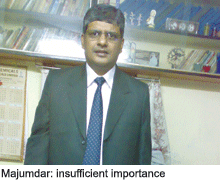 “It is disappointing that child rights, education and health have not been given their due importance in the budget. Most developed countries in the world like the US, UK and France spend around 6-7 percent of their GDP on public education and health. India allocates around 3 percent for education and 1 percent for health. When we emulate first-world economic growth, we must realise that (high) economic growth is meaningless unless it reaches 70 percent of India’s poorest,” laments Dipankar Majumdar, the Delhi-based director of the well-known NGO Child Rights & You (CRY, estb.1979), which funds child-friendly NGOs and activists across the country (disbursements: Rs.23.9 crore in 2007-08), reacting to Budget 2009-10.
“It is disappointing that child rights, education and health have not been given their due importance in the budget. Most developed countries in the world like the US, UK and France spend around 6-7 percent of their GDP on public education and health. India allocates around 3 percent for education and 1 percent for health. When we emulate first-world economic growth, we must realise that (high) economic growth is meaningless unless it reaches 70 percent of India’s poorest,” laments Dipankar Majumdar, the Delhi-based director of the well-known NGO Child Rights & You (CRY, estb.1979), which funds child-friendly NGOs and activists across the country (disbursements: Rs.23.9 crore in 2007-08), reacting to Budget 2009-10.
Mukherjee’s response to this criticism is likely to be that India’s poorest have been reached by the generous budgetary allocations made under NREGS, Bharat Nirman and other rural develop-ment programmes. But the impressive outlays for these programmes are indicative of the ignorance in government of the difference between consumption and development expenditure. Important as they are, the allocations for the NREGS and Bharat Nirman programmes are essentially consumption, rather than development outlays. While the grudging 100 days per year employment at Rs.100 per household guaranteed by NREGS may enable a family to survive starvation, it cannot be a substitute for larger education outlays because when delivered in good faith, education enables the poor not only to survive, but perhaps also to prosper. Based on the philosophy that it’s better to teach fishing than dole out fishes, the Rs.44,528 crore allocation for education in Budget 2009-10 — equivalent to 0.79 percent of GDP — is grossly inade-quate and testimony to the warped priorities of the UPA-2 government and the New Delhi establishment.
Indeed in last month’s (July) cover story in EducationWorld, we had expressed hope that the new HRD minister would be able to persuade the finance minister to increase the Centre’s outlay for education to at least Rs.70,000 crore this year. Quite obviously this hope has been belied. Nor is this as difficult a task as made out by the mandarins of North Block, New Delhi. Last year EW had presented a blueprint suggesting ways and means for the finance minister to raise an additional Rs.100,000 crore for investment in education and health (see box p.41). The missing factor is not investible resources, but a proper appreciation of national priorities and/or political will.
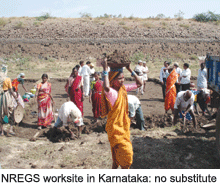 By now, if 42 years after the Kothari Commission recommen-ded an annual outlay equivalent to 6 percent of GDP (Centre plus states) for education, successive governments in New Delhi and the state capitals have barely attained half that target, it should be obvious that the elephant in every Union (and state) budget whose looming presence government and establishment economists are unwilling to acknow-ledge, is the high cost of government. The plain truth is that the top — but never articulated — priority of every government elected to office in New Delhi and the state capitals, is to maintain itself and its gigantic bureaucracy in the grand viceregal style inherited from the British raj.
By now, if 42 years after the Kothari Commission recommen-ded an annual outlay equivalent to 6 percent of GDP (Centre plus states) for education, successive governments in New Delhi and the state capitals have barely attained half that target, it should be obvious that the elephant in every Union (and state) budget whose looming presence government and establishment economists are unwilling to acknow-ledge, is the high cost of government. The plain truth is that the top — but never articulated — priority of every government elected to office in New Delhi and the state capitals, is to maintain itself and its gigantic bureaucracy in the grand viceregal style inherited from the British raj.
Unsurprisingly, in Mukherjee’s budget speech outlining his revenue gathering and spending plans, there’s not one word on the wages and salary bill of the Union government. Although under Companies Act, 1956, it’s obligatory for every corporate enterprise to detail its annual expenditure by way of salaries and perquisites to employees under a separate head and annexure, neither the Central nor state governments do so themselves. The massive and ballooning wage bill of the Central government’s estimated 4 million employees (excluding one million defence services personnel) is hidden away inside the provision made for revenue expenditure which at Rs.618,834 crore in 2009-10, exceeds its projected revenue receipts (Rs.614,497 crore).
Indeed even for professional economists and accountants, ferreting out information about the Union government’s wage bill is an arduous and time-consuming endeav-our. Several years ago (EW February 2007) your correspondent called upon the expertise of Prof. S. Mahadeshwaran of the Institute for Social & Economic Change, Bangalore to estimate the annual wage bill of the Central government. After several weeks of investigation, his research indicated that the wages, salaries and perquisites bill of the Union government aggre-gated a humungous Rs.64,000 crore — more than twice the Central government outlay for education that year. Applying the same multiplier and the impact of the Fifth and Sixth Pay commissions which have substantially raised the salaries and perks of government employees, it can be safely assumed that the annual payout to 4 million Central government servants in 2009-10 will be twice the Rs.44,528 crore budget allocation for the education of India’s 450 million children, i.e Rs.90,000 crore.
Quite clearly there is inadequate awareness within the community of economists in North Block, New Delhi of the validity of the guns versus butter nostrums of development economics. That’s why for over half a century numerous finance ministers whose names have disappeared into the footnotes of history, and their minions have presented status quo budgets, which have conspicuously failed to improve the wretched condition of over 700 million citizens scratching out miserable lives beyond the lakshman rekha of the heavily subsidised and mollycoddled great Indian middle class. Thus in Budget 2009-10 defence expenditure, at Rs.141,000 crore is 34 percent higher, and indiscriminate subsidisation of food, fertilizers, higher education, domestic electricity and water supply, cooking gas, kerosene — overwhelmingly cornered by the urban middle class — is untouched.
Without rationalising the regime of indiscriminate subsidisation which would result in slashing the government’s massive (Rs.112,000 crore, but actually substantially higher) annual subsidies bill, and cutting defence expenditure (while simultaneously permitting the defence services to generate their own revenue as per the Chinese model), Budget 2009-10 has proposed to increase rural purchasing power through generous allocations to the NREGS, Bharat Nirman and other rural development programmes. Yet burdened as it is with a venal, leaky and unaccountable bureaucracy through which these allocations have to be canalised into rural households and projects, it’s doubtful whether this strategy, which has required the government to monetise a Rs.400,000 crore fiscal deficit with dangerous inflationary potential, will pay off.
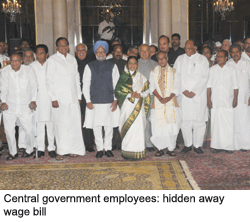 One of the development strategies constantly recommended by Education World to raise resources for investment in education and health has been through sale of equity of public sector companies, which are a drag on government finances and the Indian economy (see box). Yet despite the Union finance ministry’s own Economic Survey 2009 published on the eve of Budget 2009-10 recommending dis-investment of public sector enterprises (PSEs) to raise Rs.25,000 crore, evidently Mukherjee’s olde world socialist mindset couldn’t accept this modest recommendation. According to Chetan Ahya, managing director of Morgan Stanley Research writing in the Economic Times (July 20), the total market value of government companies (including unlisted companies) is US$ 406 billion (Rs.2003,000 crore). Yet the best Mukherjee could do in Budget 2009-10 is to raise Rs.1,120 crore by way of sale of PSE equity.
One of the development strategies constantly recommended by Education World to raise resources for investment in education and health has been through sale of equity of public sector companies, which are a drag on government finances and the Indian economy (see box). Yet despite the Union finance ministry’s own Economic Survey 2009 published on the eve of Budget 2009-10 recommending dis-investment of public sector enterprises (PSEs) to raise Rs.25,000 crore, evidently Mukherjee’s olde world socialist mindset couldn’t accept this modest recommendation. According to Chetan Ahya, managing director of Morgan Stanley Research writing in the Economic Times (July 20), the total market value of government companies (including unlisted companies) is US$ 406 billion (Rs.2003,000 crore). Yet the best Mukherjee could do in Budget 2009-10 is to raise Rs.1,120 crore by way of sale of PSE equity.
Worse, during the course of his tedious budget speech, Mukherjee felt it incumbent upon himself to reiterate his commitment to the obsolete PSE-led growth model, expressing the government’s intent to retain “at least 51 percent equity in our enterprises”. It’s an indicator of how out of touch with market realities is the Nehruvian socialism mindset of India’s old-new finance minister that he believes there will be takers for the equity of PSEs — typified by Air India which is losing Rs.15 crore per day currently — in which government owns 51 percent of shareholding.
Budget 2009-10, with its unimaginative consumption rather than development focus, which has failed and neglected to make sufficient provision for developing the country’s abundant and high-potential human resource pool, is indicative of a deep malaise within the economic ministries of the Union government. Once upon a time, the annual budget speech of the Union finance minister used to present a clear picture of the revenue sources and deployment of government finances. But in recent times the budget exercise has tended to vary according to the whims and fancies of the incumbents of North Block, New Delhi which houses the Union finance ministry. The public interest and meaningful debate of the Union budget demands that its presentation is restructured to ensure full disclosure.
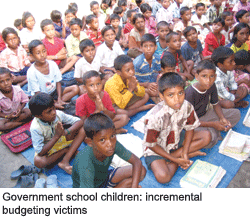 Simultaneously, it would be advisable for the finance ministry to jettison the failed system of incremental budgeting across a broad front of activities in favour of a focused, needs-based, budgeting system. Thus it is recommended that next year, Budget 2010-11 should identify education and health as prime focus areas, evaluate their needs, and freeze the expenditure of all other sectors to pour maximum resources into this critical area. The following year the focus could be on the law and order machinery, and the year after on judicial reform, and so on. The current system of sprinkling Union and state government revenues across all sectors of the economy has clearly proved ineffective and has outlived its purpose.
Simultaneously, it would be advisable for the finance ministry to jettison the failed system of incremental budgeting across a broad front of activities in favour of a focused, needs-based, budgeting system. Thus it is recommended that next year, Budget 2010-11 should identify education and health as prime focus areas, evaluate their needs, and freeze the expenditure of all other sectors to pour maximum resources into this critical area. The following year the focus could be on the law and order machinery, and the year after on judicial reform, and so on. The current system of sprinkling Union and state government revenues across all sectors of the economy has clearly proved ineffective and has outlived its purpose.
Commendably, the new Union HRD minister Kapil Sibal has been quick off the blocks and presented a detailed reformist agenda for cleansing the augean stables of Indian education. It would have been appropriate if his eminently sound and sensible proposals had the full support of Budget 2009-10.
In the conclusion of his Budget 2009-10 presentation speech of July 6, quoting Mahatma Gandhi to the effect that “democracy is the art and science of mobilising the entire physical, economic and spiritual resources of various sections of the people in the service of the common good of all”, Mukherjee said: “This is precisely what we will have to do. With strong hearts and enlightened minds and willing hands, we will have to overcome all odds and remove all obstacles to create a brave new India of our dreams”.
Surely enlightened minds would accord the highest priority to education and development of the world’s largest child population to transform it into the world’s biggest human resource pool, capable of delivering goods and services worldwide in the 21st century. But Budget 2009-10 seems to suggest that the UPA-2 government, and its resuscitated finance minister in particular, can’t dream big.
For box on Supplementary Budget for Elementary Education go to userfiles/lib-lab-lav.pdf
With Autar Nehru (Delhi) & Summiya Yasmeen (Bangalore)